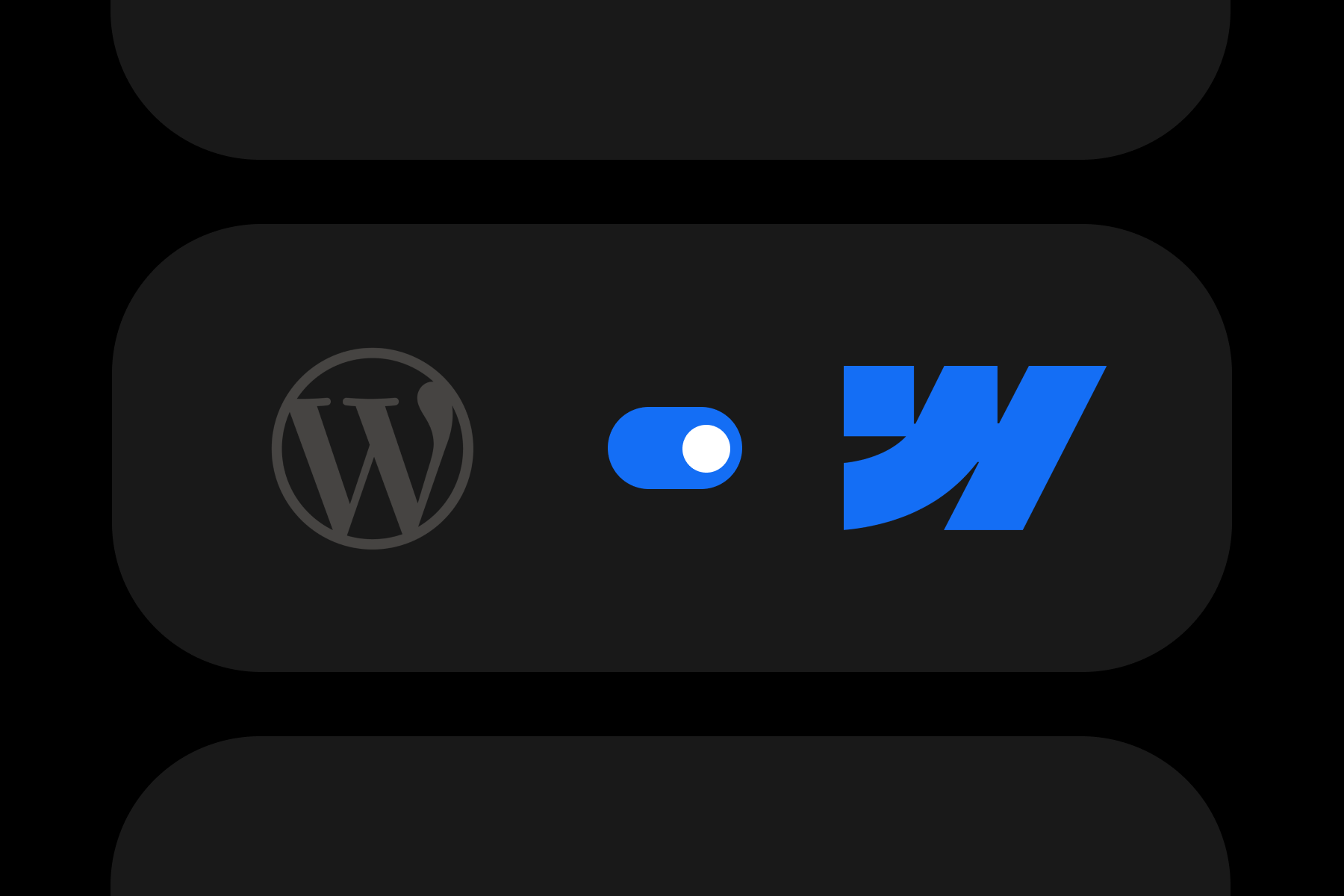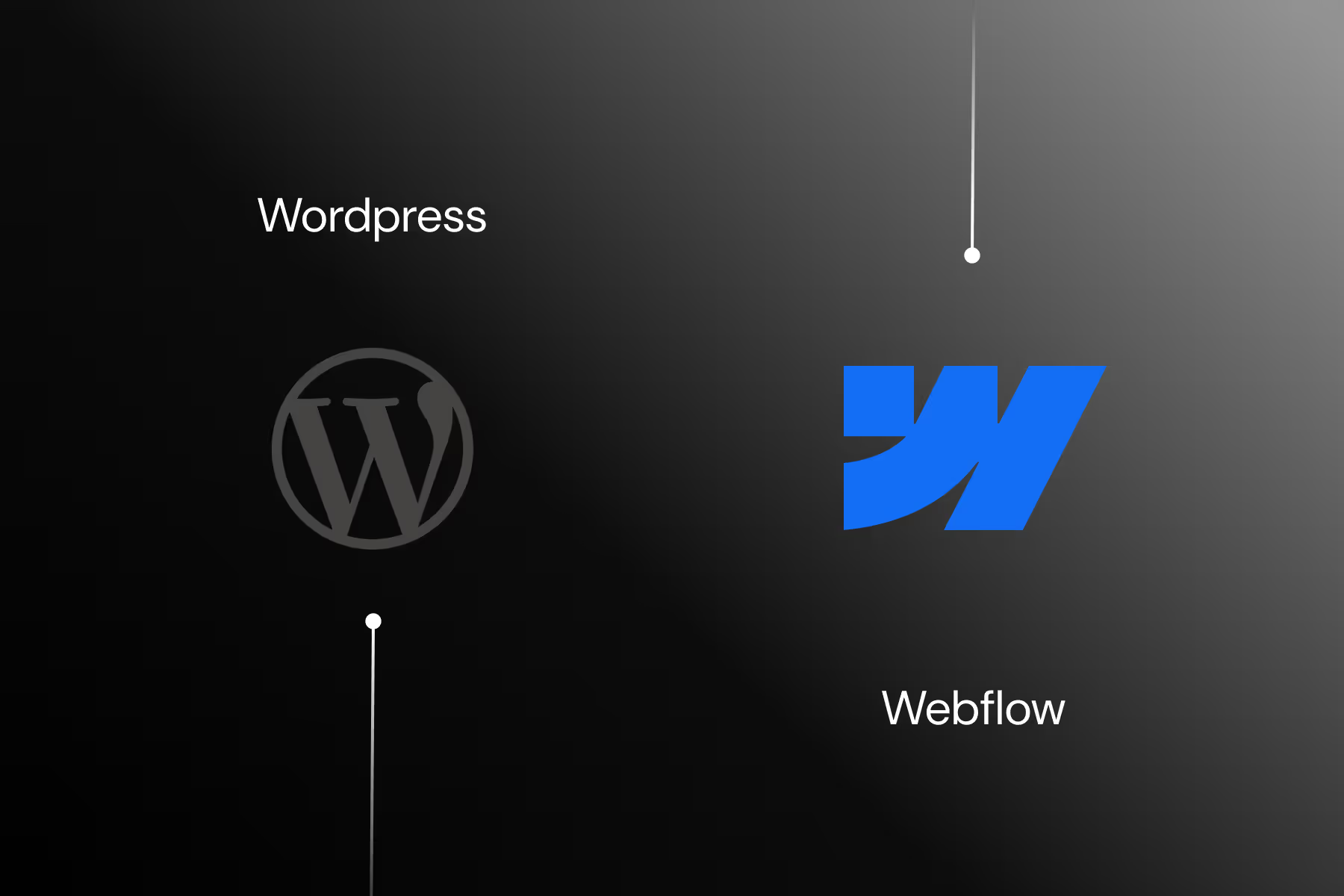Why Businesses Are Switching From WordPress to Webflow (And Should You?)

For years, WordPress has been the go-to platform for building websites. But as digital needs have evolved, more and more businesses are asking: Is WordPress still the best option?
Security Needs Constant Attention
WordPress powers most of the web, making it a target for security threats. The challenge is managing plugins and themes that can create vulnerabilities.
The day-to-day:
- Regular plugin updates to patch security holes
- Monitoring for compatibility issues
- One outdated plugin can expose your site
Webflow's approach:
Security updates happen automatically on the platform side. The closed system means fewer entry points for vulnerabilities.
Performance Degrades Over Time
Every plugin you add to WordPress impacts performance. Contact forms, SEO tools, analytics, caching, they all add weight.
The impact:
- Site speed decreases as you add functionality
- More database queries slow everything down
- Visitors leave slow-loading sites
Webflow's approach:
Clean code without database-driven front-end rendering. Built-in CDN hosting. Sites typically load faster without needing optimization plugins.
Updates Need Technical Knowledge
Changing your homepage layout or adding new sections in WordPress often requires understanding themes, PHP, or page builder limitations.
The reality:
- Simple changes can require developer time
- Team members hesitate to make updates
- Marketing waits on technical resources
Webflow's approach:
Visual editing where you see your changes in real-time. No code needed for design updates. Teams can make changes without technical bottlenecks.
Ongoing Maintenance
WordPress requires regular attention, plugin updates, theme compatibility checks, database optimization, and backups.
What this involves:
- Weekly update cycles
- Compatibility testing after updates
- Managing backups
- Database maintenance
Webflow's approach:
Platform handles infrastructure maintenance. Automatic backups included. Less time spent on technical upkeep.
Scaling Requires Planning
As traffic and content grow, WordPress sites often need hosting upgrades, caching setup, and database optimization.
The challenge:
- Performance drops as the site grows
- Need for more expensive hosting
- Technical complexity increases
Webflow's approach:
Hosting scales with your traffic. Performance stays consistent as your site grows.
When WordPress Makes Sense
WordPress works well for:
- Sites with complex custom functionality
- Large e-commerce operations
- Community platforms with forums
- Projects needing extensive back-end customization
When Webflow Fits Better
Webflow works well for:
- Marketing websites
- SaaS company sites
- Portfolio and agency sites
- Landing pages
- Business sites that need frequent updates
Cost Considerations
WordPress typically involves:
- Hosting fees
- Premium plugins
- Theme licenses
- Developer time for updates
Webflow typically involves:
- Hosting plan
- Design/development for initial build
- Updates (handled in-house or through developers)
Both platforms have costs, they're just structured differently.
Is Webflow Right for You?
Consider Webflow if:
- Your team wants to make design updates without developers
- Site speed is affecting your business
- You want less time spent on maintenance
- Your site's main job is marketing and conversion
Stay with WordPress if:
- You need complex custom functionality
- You're running a large e-commerce store
- You need specific WordPress plugins that don't have alternatives
The Decision
Both platforms work. The question is which workflow fits your team and business better.
WordPress offers flexibility and a massive ecosystem. Webflow offers speed and simplicity for design-focused websites.
Choose based on what your site actually needs, not what's popular.
Considering a platform switch? We can walk you through what migration would look like for your specific site and help you make an informed decision.
Frequently Asked Questions
Q: Will I lose my SEO rankings if I switch from WordPress to Webflow?
Not if the migration is done properly. With correct 301 redirects, meta tags, and URL structure planning, your SEO rankings can be maintained. Many businesses actually see improved rankings due to better site speed.
Q: How long does it take to migrate from WordPress to Webflow?
Most business websites take 2-4 weeks to migrate. The timeline depends on your site's complexity, number of pages, and custom functionality requirements.
Q: Can I migrate my WordPress blog content to Webflow?
Yes. Blog posts, images, and content can be migrated to Webflow's CMS. The structure might change, but your content transfers over.
Q: Is Webflow more expensive than WordPress?
The costs are different, not necessarily higher. WordPress has hosting, plugins, themes, and maintenance costs. Webflow has hosting plans that include most functionality. Total cost depends on your specific needs.
Q: Can my team update a Webflow site without coding knowledge?
Yes. Webflow's Editor allows non-technical team members to update content, images, and text without touching the design or code.
Q: What happens to my WordPress plugins in Webflow?
Most plugin functionality can be replicated in Webflow through native features, integrations, or custom code. Some complex plugins might need alternative solutions.
Q: Do I need a developer to maintain a Webflow site?
For content updates and basic changes, no. For design changes, new features, or complex updates, you'll likely want developer help similar to WordPress.
Ditch the delays. launch your webflow website faster.
Start your project with a partner who values speed and seamless communication.
.avif)
